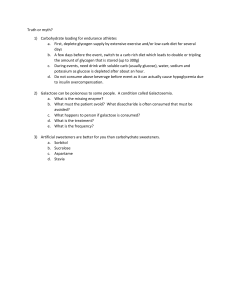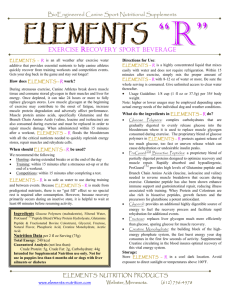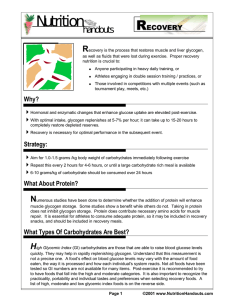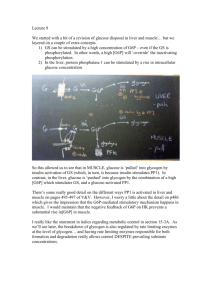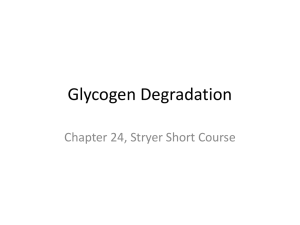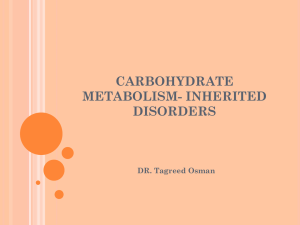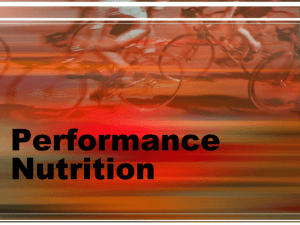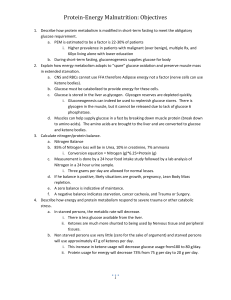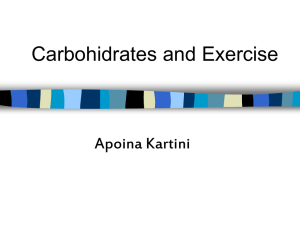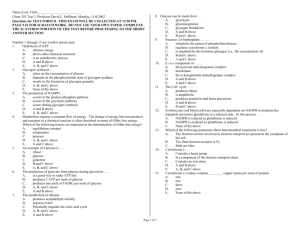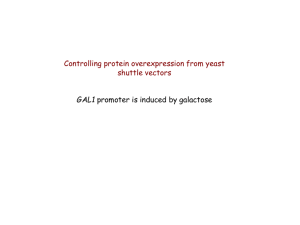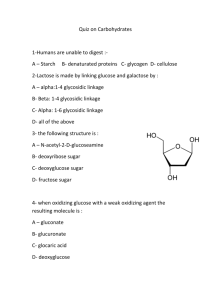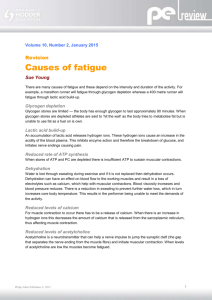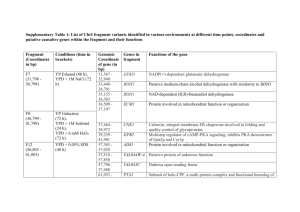Chapter 15, Question #11
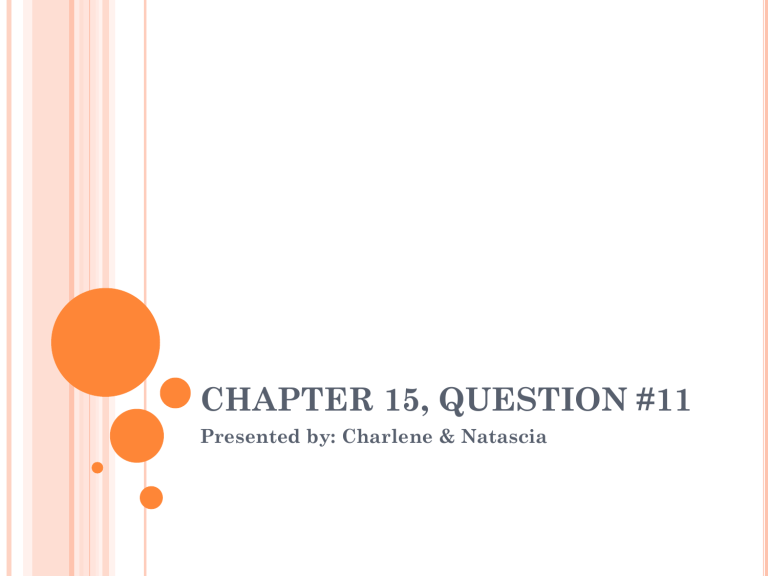
CHAPTER 15, QUESTION #11
Presented by: Charlene & Natascia
THE QUESTION:
Given are four different clinical case studies
(Case A-D)
Need to mainly determine two things for each case:
1. Which enzyme is most likely defective
2. What would be the most appropriate treatment
LIST OF VARIOUS ENZYMES
Possible Defective Enzymes
(a) Muscle PFK-1
(b) Phosphomannose isomerase
(c) Galactose 1-phosphate uridylyltransferase
(d) Liver glycogen phosphorylase
(e) Triose kinase
(f) Lactase in intestinal mucosa
(g) Maltase in intestinal mucosa
(h) Muscle debranching enzyme
LIST OF VARIOUS TREATMENTS
Treatments
1. Jogging 5 km each day
2. Fat-free diet
3. Low-lactose diet
4. Avoiding strenuous exercise
5. Large doses of niacin (the precursor of NAD+)
6. Frequent feedings (smaller portions) of a normal diet
CASE A
The patient develops vomiting and diarrhea shortly after milk ingestion.
A lactose tolerance test is given
The patient’s blood glucose and galactose concentrations do not increase during the test
Questions:
Why do blood glucose and galactose increase then decrease during the test in healthy individuals?
Why do they fail to rise in the patient?
Answers:
(f) Lactase in intestinal mucosa & 3. Low-lactose Diet
CASE B
The patient develops vomiting and diarrhea after ingestion of milk.
His blood is found to have a low concentration of glucose but a much higher than normal concentration of reducing sugars.
The urine tests positive for galactose.
Questions:
Why is the concentration of reducing sugar in the blood high?
Why does galactose appear in the urine?
Answers:
(c) Galactose 1-phosphate uridylytransferase & 3. Lowlactose diet
CASE C
The patient complains of painful muscle cramps when performing strenuous physical exercise but has no other symptoms.
A muscle biopsy indicates a muscle glycogen concentration much higher than normal.
Question:
Why does glycogen accumulate?
Answers:
(h) Muscle debranching enzyme & 4. Avoid strenuous exercise
CASE D
The patient is lethargic, her liver is enlarged and a biopsy of the liver shows large amounts of excess glycogen.
She also has a lower than normal blood glucose level.
Question:
What is the reason for the low blood glucose in this patient?
Answers:
(d) Liver glycogen phosphorylase & 6. Frequent feedings (smaller portions) of a normal diet
